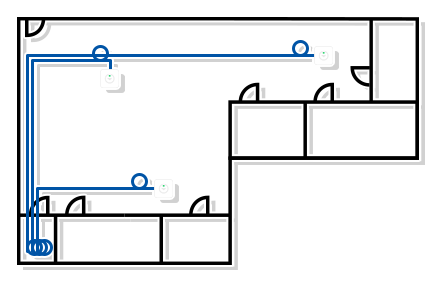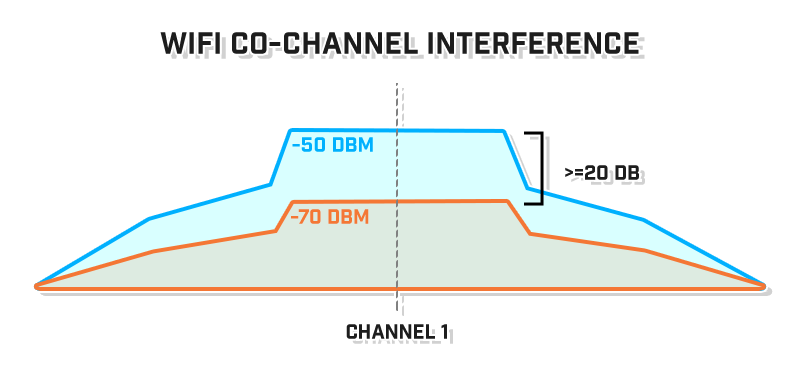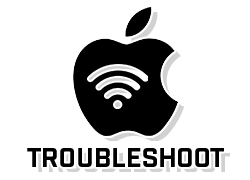WiFi Alliance is a non-profit organization that promotes WiFi technology and certifies WiFi products for conformity to certain standards of interoperability. While the WiFi Alliance owns the WiFi trademark, manufacturers may use the trademark to brand certified products that have been tested for interoperability.
Blog Team
Recent Posts
WiFi 6, WiFi 5, WiFi 4: New Generational WiFi Names from the WiFi Alliance
[fa icon="calendar'] Oct 19, 2018 12:52:12 PM / by Blog Team posted in WiFi
Cable Types: Cat5e, Cat6, Cat6a
[fa icon="calendar'] Oct 12, 2018 3:32:27 PM / by Blog Team
While there are many types of cable, there are three main types, or categories, of Ethernet cable that are commonly used for network deployments: Cat5e, Cat6, and Cat6a. Each of these cables are constructed of fundamentally similar twisted pairings of copper cables, and are each used with the same RJ-45 connection to plug into computers, routers, switches, or other network equipment. There are reasons for and against the use of all three, such as cost, ease of installation, and performance.
Cabling and Pathways: Best Practices for an Office Setting
[fa icon="calendar'] Oct 5, 2018 10:11:16 AM / by Blog Team posted in WiFi
There are wires in wireless networks? Yes, and probably more than you think. For an office’s wireless setup, there are wires and cables that need to be run throughout the entire office. In this post, we will be talking about the basics that are required in order to prepare and execute the pathways and cabling in an office setting.
Access Point Hanging Techniques
[fa icon="calendar'] Sep 28, 2018 10:44:12 AM / by Blog Team posted in WiFi
Where and how an access point (AP) is hung is a simple process that requires planning and logical decision making based on a handful of factors, including the surface material, the mounting type of the access point, and the neighboring entities. Using a combination of proper mounting equipment and precise placement allows for an access point to perform to the best of its ability.
Understanding Intrusion Detection and Prevention Systems
[fa icon="calendar'] Sep 21, 2018 10:07:01 AM / by Blog Team posted in WiFi
An intrusion detection system (IDS) monitors network devices in order to grant security administrators the ability to identify attacks in progress and take appropriate action to protect a network. In order for users on a network to access a web server on the internet, the firewall must allow traffic through port 80. However, this open port is often used as an attack vector for hackers and malware to gain access to your network. An IDS examines this traffic and compares it with known exploits; similar to how antivirus software uses known virus signatures to identify threats. When the intrusion system detects a match to a known exploit, it sends an alert to the security or web server administrator so they can take action. Intrusion prevention systems (IPS) are very similar to IDSs, but as opposed to just sending an alert, these systems go one step further and automatically take action to prevent an intrusion.
Social Engineering: Educating Users on How to Strengthen Networks
[fa icon="calendar'] Sep 14, 2018 1:39:48 PM / by Blog Team posted in WiFi
“If it is online, it can be hacked!” This phrase has served as the motivation for both hackers and security professionals for years. Every network has its weaknesses and vulnerabilities that hackers can exploit to gain access to your network. The only way to completely avoid a potential attacker is to pull the network cable. However, depending on the circumstances, doing this could actually create the exact denial of service result the attacker intended.
Building a Wired Backbone Installation Kit
[fa icon="calendar'] Sep 7, 2018 10:29:42 AM / by Blog Team posted in WiFi
It is important to understand that a wireless network isn’t wireless at all. There are cables, access points, and various other pieces of hardware that need to be installed when implementing a wireless network. With any installation, there are specific tools that are required to get the job done. While a WiFi project might require some specific tools depending on the building’s materials, size, and network needs, we have compiled a list of the basic tools and materials needed for a WiFi installation kit.
Personal WiFi Routers / MiFi Impact on Office WiFi
[fa icon="calendar'] Aug 31, 2018 4:16:29 PM / by Blog Team posted in WiFi
A personal WiFi router is generally used for residential purposes. They are directly connected to a modem that is provided to you by your Internet Service Provider (ISP) and are capable of propagating wireless signal throughout a home.
Apple Devices WiFi Troubleshooting
[fa icon="calendar'] Aug 24, 2018 10:07:09 AM / by Blog Team
WiFi is the oxygen of the IT world. It's been implemented in almost every home, business, restaurant, and even on planes. It is a revolutionary technology that connects people and businesses. Nevertheless, it is prone to technical issues like dropping the connection, slow connection, or the SSID not appearing on the device. While it does get extremely frustrating when you can't connect to the Internet, these simple troubleshooting steps will help you regain access and be on your way.
Introduction to 5 GHz WiFi Channels
[fa icon="calendar'] Aug 17, 2018 2:08:37 PM / by Blog Team posted in WiFi
WiFi signal at 20 MHz has a very distinct shape. This shape leads to overlap on other WiFi channels that can be used for setting up access points (AP). Unlike 2.4 GHz channels, all 25 of the available 5 GHz channels are non-overlapping at 20 MHz wide.
Download our Best WiFi Channel Quick Guide
For best practices, it is highly recommended to choose different 5 GHz 20 MHz channels:











